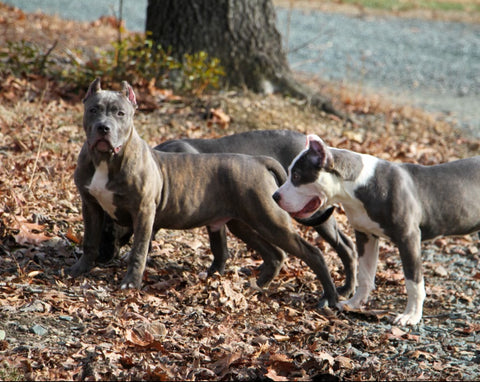Ear cropping American Pit Bull Terriers has been a longtime practice within the breed community. This practice serves a number of purposes beyond just "aesthetics". Some people wonder why it's done and what good it brings. Let's learn about ear cropping and why some people choose to crop their Pit Bull's ears.
Sticking to the Standard
Ear cropping isn't just about looks - it's about maintaining the integrity of APBT breed. Historically, Pit Bulls have sported cropped ears as part of their distinct appearance. By upholding this tradition, we honor the breed's heritage and showcase unique characteristics.

(Pegasus with a show crop, before stitches were removed)

(Pegasus after stitches were removed)
Enhancing Hygiene
Beyond the breed standard, ear cropping contributes to the hygiene of Pit Bulls. Pit Bulls, like many other breeds with floppy ears, are prone to ear problems due to poor ventilation and moisture buildup. Cropped ears allow for better airflow and easier cleaning, reducing the risk of infections and other ear-related issues.

(Steele Maiden with a show crop - fully healed ears)
Prevention of Ear Trauma
Pit Bulls with long, floppy ears are more prone to ear injuries during activities such as running through bushes or playing with other dogs. Floppy ears can even get caught on objects, leading to painful cuts and even non-stop bleeding. Ear cropping can ultimately help prevent injuries and discomfort.

(Anamu with a short crop - fully healed ears)
Responsible Breeding Practices
As responsible breeders, we prioritize the well-being of our dogs above all else. Ear cropping services are performed by our well-trained veterinarians using safe and humane techniques, ensuring minimal discomfort for our dogs. We take every measure to ensure that our Pit Bulls receive the best care and attention at every stage of their lives.

Overall, ear cropping APBTs is a practice that is driven by tradition and purpose. While it may raise questions, understanding the reasons behind ear cropping sheds light on its significance within the breed community. And even though tradition and standard is important, respecting the well-being and dignity of Pit Bulls should always be the top priority.

What vet do you use for ear cropping?